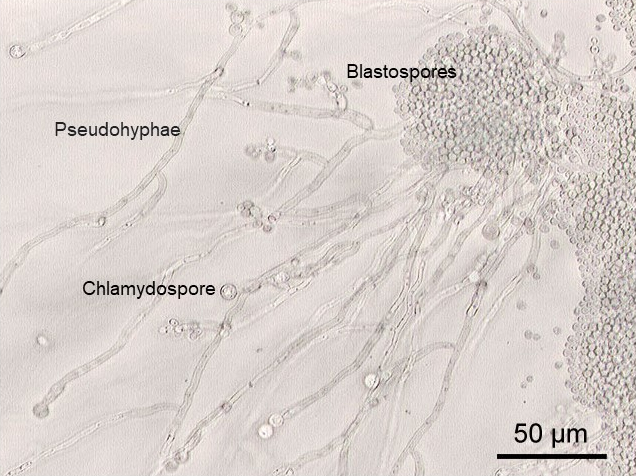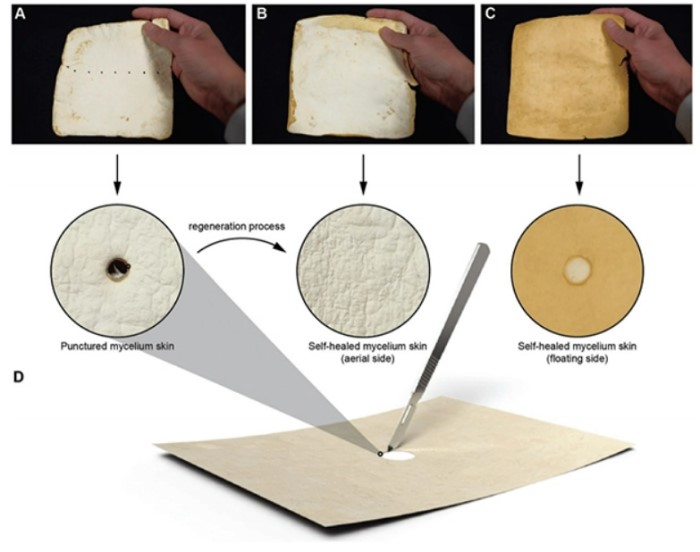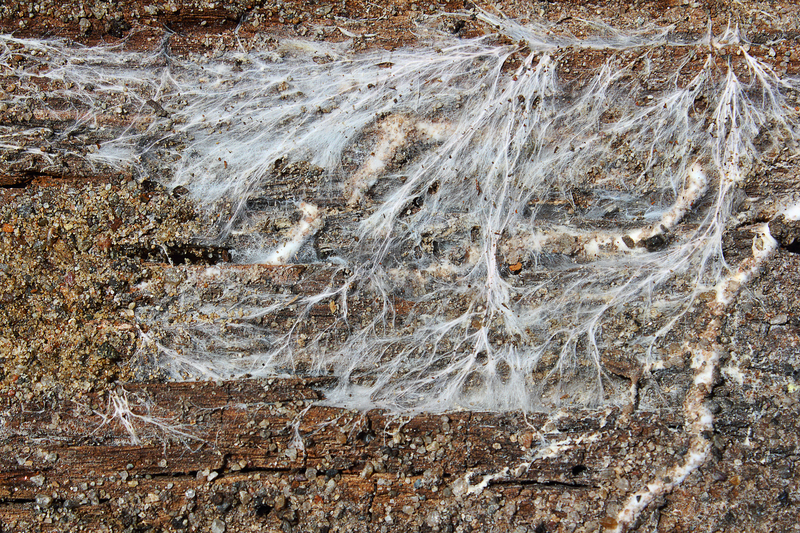May 6 to 21 is Science Odyssey, a celebration of all things science! OWLconnected is recognizing this two-week event with lots of science content, as well as with an amazing contest, presented by our friends at the Natural Sciences and Engineering Research Council of Canada (NSERC). Details are at the end of this post—be sure to enter!
Have you ever torn a hole in a favourite piece of clothing?
Nearly all of us have at some point or another, and it's always a bummer. At best, you're going to have to sew or patch that hole back up (a good skill to learn, by the way, and not as hard as you might think!). At worst, it might be beyond repair and something that needs to be thrown away.
But what if that clothing could simply 'heal' itself and grow back over the hole? In a few days, you'd have your favourite jacket back to as good as new!
This is the technology being tested by a team of researchers from Newcastle University and Northumbria University in the United Kingdom. Using mycelium, the incredible network of root-like growths produced by fungi, they have create a thin mushroom leather that can self-repair.
That's right. You can punch a hole in it and in less than a week, the mycelium grows across the hole and it is pretty much good as new!
How does it work? And what might this mean for fashion in the future?
Super spores

A microscopic image of chlamydospores in a yeast, which is a type of fungi. (Wikimedia Commons)
Mycelium networks are made when filaments called hyphae grow into vast networks that can literally stretch for miles. And using this stuff to make materials is not new.
We already use it in fields like textiles (fabrics) and for construction. It is being proposed as a replacement for plastics. (There are even thoughts of using mycelium to make shelters on Mars!) But in those cases, the materials are not able to regenerate. This is because the process that is used to create them ends up killing something called the chlamydospores.
These are the fungal spores that end up kickstarting the whole growth process. Without them, there can be no further regeneration.
But this team has found a way to work around the problem, creating a material that allows the spores to stay alive and thrive.
Crucial mixture

This shows the material A) punched with holes, then B) and C) how it looked after self-healing. (Elsacker et al., Advanced Functional Materials, 2023)
This new material is made with a combination of mycelium, chlamydospores, carbohydrates, and proteins. This mixture is then placed in a liquid and allowed to grow. It creates a thin skin that is then removed and dried.
And there we have it. Mushroom leather!
As the images above show, researchers found that they could poke holes into the material, return it to the liquid, and the mycelium would grow back over the 'wounds'. Truly remarkable stuff! The material was just as strong as it was when it was first made, too!
What is next?
Vegan leather pants (leather not made from animal skins) do exist, but they are often made from plastics. (Getty Embed)
So where can you order your self-healing mushroom leather jacket? Well, hold your horses there.
Though this innovation is a stunner and full of all sorts of amazing possibilities, it is not yet ready to be turned into clothing. For one, the material is very thin. It would not be able to survive the everyday wear and tear that we put our garments through.
Also, though the holes heal well, you can still see where they were. Ideally, they would love for the repairs to be impossible to see and to look as good as new.
The researchers think that they can ultimately find a way to make the material thicker and stronger, whether that means growing it in layers or 'plasticizing' it with something called glycerol.
Even if these materials isn't hitting the stores tomorrow, it feels more and more likely that we'll be wearing this stuff in the future. Hopefully, it points to clothing that is not only self-healing, but also sustainable!
Contest alert
Don't forget to enter the Science Odyssey Contest! CLICK HERE TO ENTER.

 An example of mycelium growing across rotting wood. (ID 135512403 © Taviphoto | Dreamstime.com)
An example of mycelium growing across rotting wood. (ID 135512403 © Taviphoto | Dreamstime.com)









